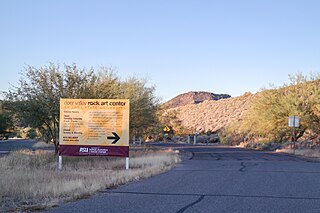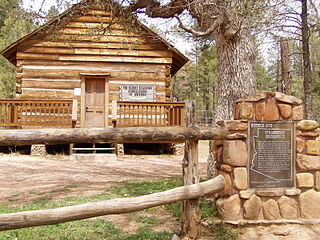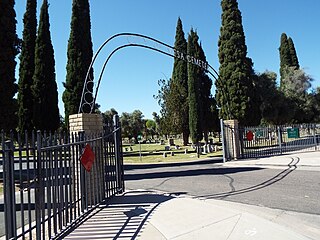
St. David or Saint David is a census-designated place (CDP) in Cochise County, Arizona, United States. The population was 1,699 at the 2010 census.

Mesa is a city in Maricopa County, Arizona, United States. It is the third-most populous city in Arizona, after Phoenix and Tucson, the 36th-most populous city in the U.S., and the most populous city that is not a county seat. The city is home to 504,258 people as of 2020. It is the most populous city in the East Valley of the Phoenix metropolitan area. It is bordered by Tempe on the west, the Salt River Pima–Maricopa Indian Community on the north, Chandler and Gilbert on the south along with Queen Creek, and Apache Junction on the east.

Lehi is a city in Utah County, Utah, United States. The population was 75,907 at the 2020 census, up from 47,407 in 2010, and it is the center of population of Utah. The rapid growth in Lehi is due, in part, to the rapid development of the tech industry region known as Silicon Slopes.

Casa Grande Ruins National Monument, in Coolidge, Arizona, located northeast of Casa Grande, Arizona, preserves a group of Hohokam structures dating to the Classic Period (1150–1450 CE).

Pueblo Grande Ruin and Irrigation Sites are pre-Columbian archaeological sites and ruins, located in Phoenix, Arizona. They include a prehistoric platform mound and irrigation canals. The City of Phoenix manages these resources as the S’edav Va’aki Museum.

Lehi is a community within Mesa, Arizona. Lehi existed prior to the founding of Mesa, and was annexed by its much larger former neighbor in 1970. It is now the northern limit of central Mesa.

The Sharlot Hall Museum is an open-air museum and heritage site located in Prescott, Arizona. Opened in 1928 by Sharlot M. Hall as the Gubernatorial Mansion Museum, the museum that now bears her name is dedicated to preserving the history and culture of the Central Highlands of Arizona.

The Deer Valley Petroglyph Preserve, formerly known as the Deer Valley Rock Art Center, is a 47-acre nature preserve featuring over 1500 Hohokam, Patayan, and Archaic petroglyphs visible on 500 basalt boulders in the Deer Valley area of Phoenix, Arizona. In 1980, the US Army Corps of Engineers contracted J. Simon Bruder to conduct an archaeological investigation prior to the construction of the Adobe Dam at the Hedgpeth Hills. The petroglyphs are between 500 and 5,000 years old. The site was listed on the National Register of Historic Places in 1984, and it was also listed with the Phoenix Points of Pride. The preserve and museum are operated by the ASU College of Liberal Arts and Sciences's School of Human Evolution and Social Change.
The following is a timeline of the history of the city of Mesa, Arizona, United States.

The Strawberry Schoolhouse is a historic one-room school building located in northwestern Gila County, Arizona, in the small mountain community of Strawberry. Built of pine logs in 1885, the Strawberry Schoolhouse is reputed to be the "oldest standing schoolhouse in Arizona" and now functions as a fully restored local history museum, complete with a late-19th century classroom exhibit.

The following is a timeline of the history of the area which today comprises the U.S. state of Arizona. Situated in the desert southwest, for millennia the area was home to a series of Pre-Columbian peoples. By 1 AD, the dominant groups in the area were the Hohokam, the Mogollon, and the Ancestral Puebloans. The Hohokam dominated the center of the area which is now Arizona, the Mogollon the southeast, and the Puebloans the north and northeast. As these cultures disappeared between 1000 and 1400 AD, other Indian groups settled in Arizona. These tribes included the Navajo, Apache, Southern Paiute, Hopi, Yavapai, Akimel O'odham, and the Tohono O'odham.

The City of Mesa Cemetery is a historic cemetery located at 1212 N. Center Street in the city of Mesa, Arizona. It is the final resting place of various notable early citizens of Mesa. Among those who are interred in the cemetery are early pioneers, mayors, businessman, criminals and veterans of the United States Armed Forces.














